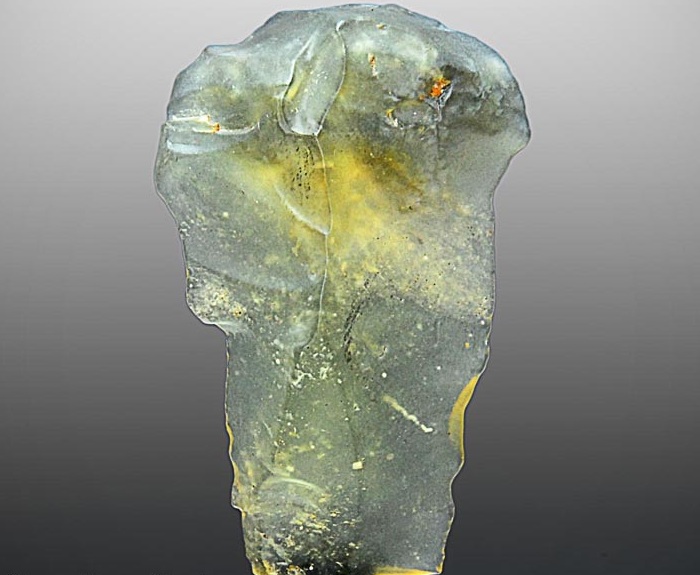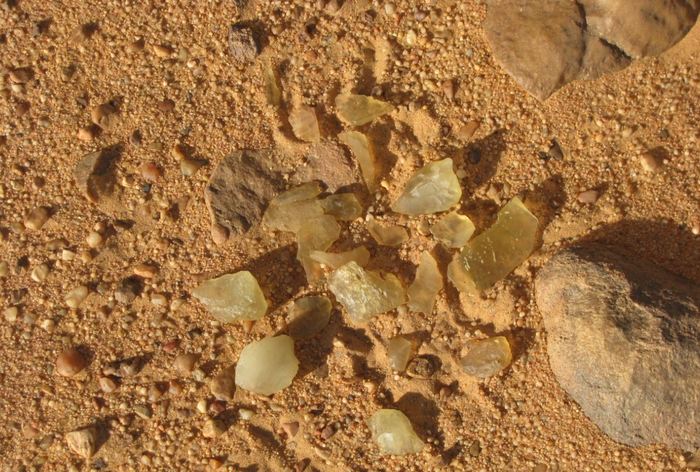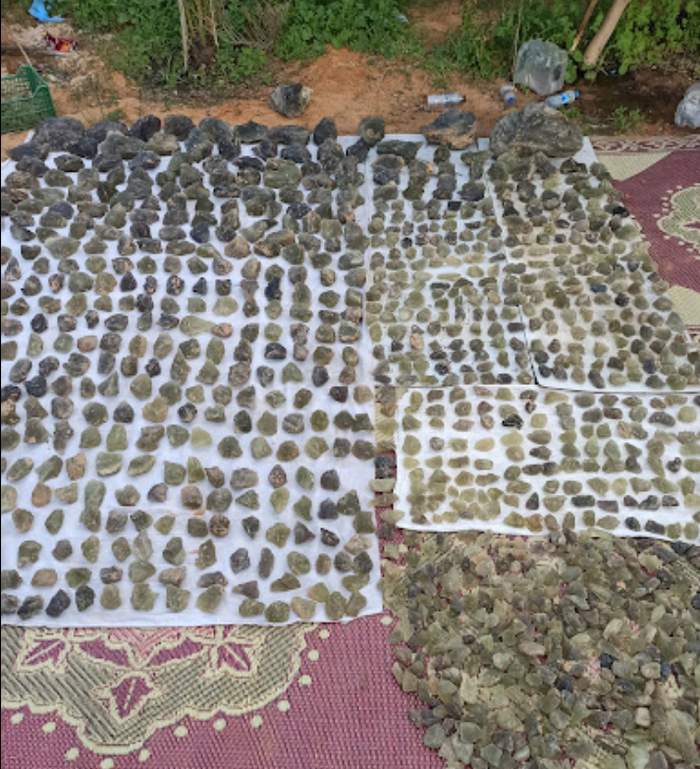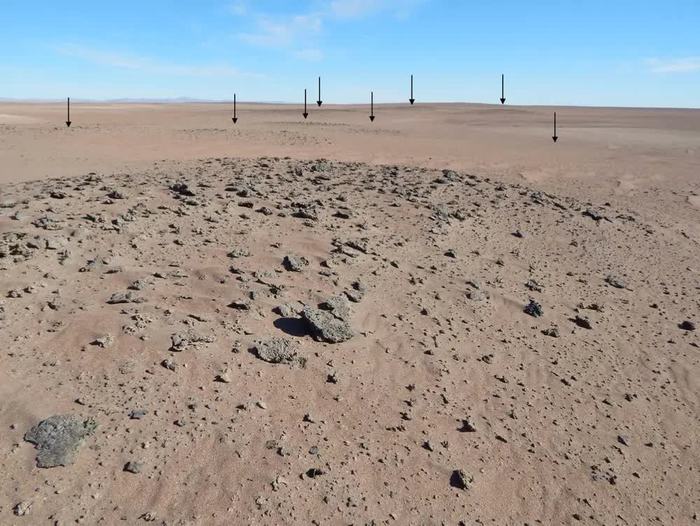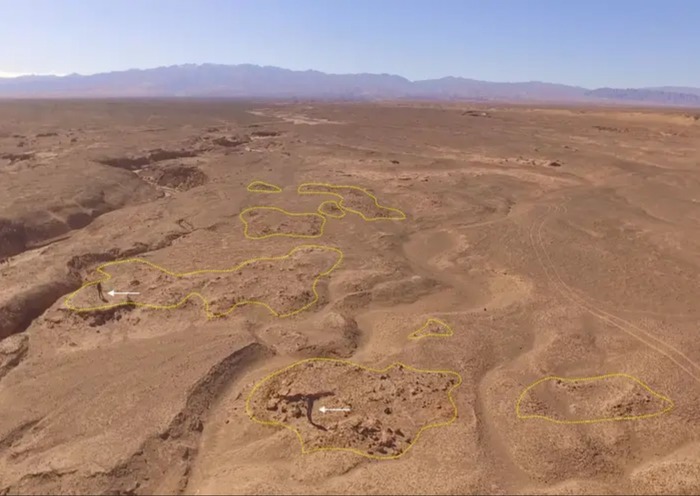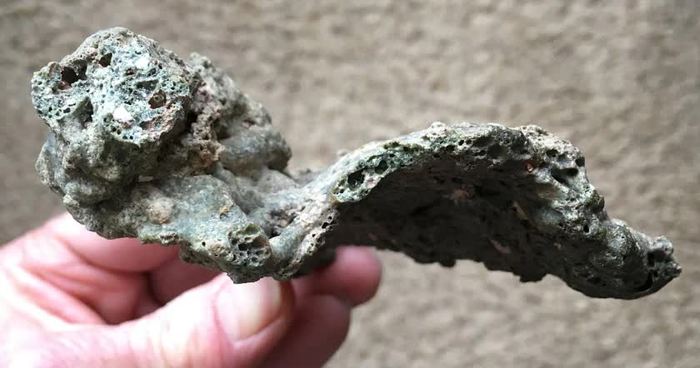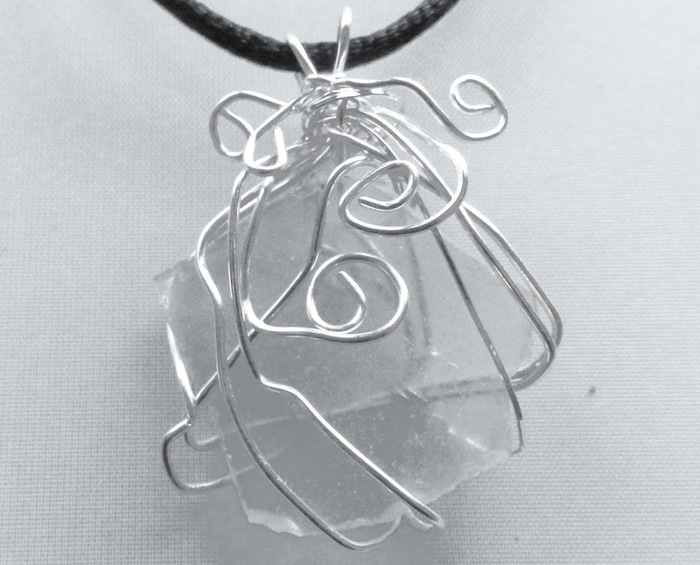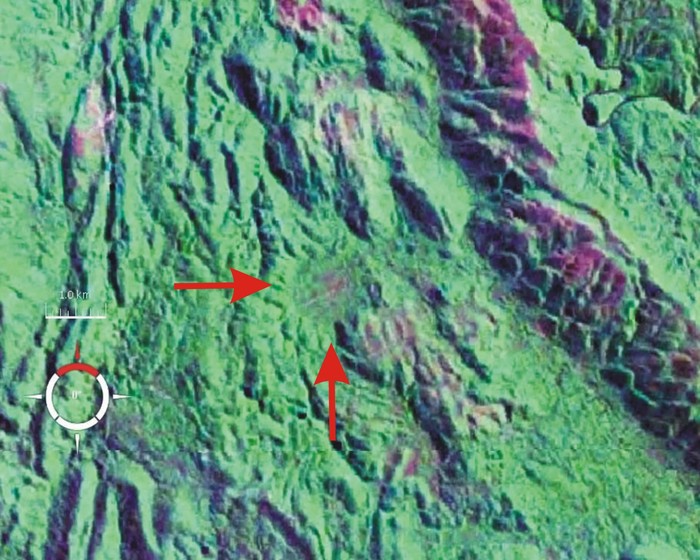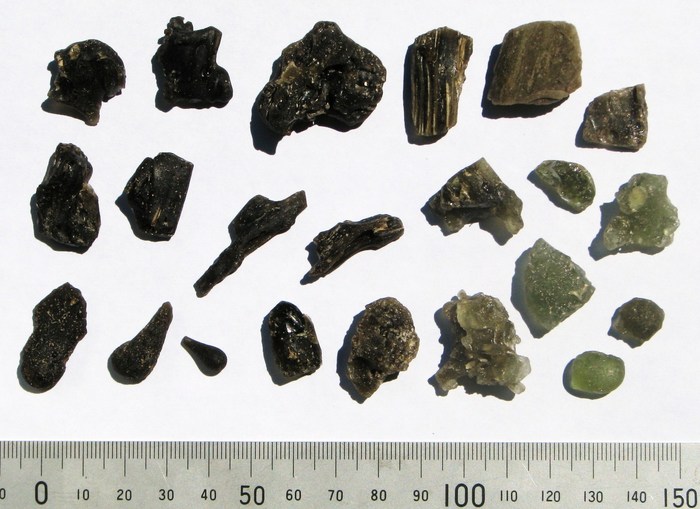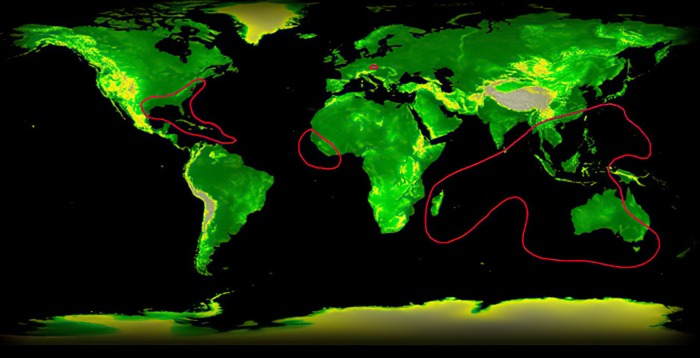"several aspects regarding its origin are largely unknown and rather puzzling." Mon 20 March 2023
Shard of rather puzzling Libyan desert glass. Source: Mindat
From Terrestrial target and melting site of Libyan Desert Glass:
In spite of the large body of literature available on Libyan Desert Glass (LDG), several aspects regarding its origin are largely unknown and rather puzzling. Several hypotheses, through rather unlikely and bizarre terrestrial processes, have been proposed in the past.
Libyan Desert Glass is the most known well-known desert fused glass. There are others.
The map's green markers indicate five fields of fused glass, four of them in deserts. Blue markers indicate rumoured fields of glass in two more deserts:
Locations of fused glass fields.
Key:
-
Green marker: confirmed field of fused glass:
-
Blue marker: unconfirmed field of fused glass:
- Southern Iraq
- Near Lop Nur, Gobi Desert.
From Australian ‘bush glass’ bears the fingerprints of a cosmic collision with an iron meteorite 1:
There are many reports of enigmatic natural glasses, in places such as Argentina, Australia and elsewhere, whose origins are ambiguous. In many cases no crater is known in the vicinity, such as Libyan desert glass. Determining whether they have an impact origin requires careful detective work to look for the telltale signs.
What's so enigmatic about fields of natural fused glass?
Try 'intense heat from above' soldier. Source: Monster Hunter
By the way, if you've ever wondered who provided the base graphic for computer-generated Taylor Swift models, I suspect this is her. In Ultraviolet, it's even more obvious that singer and actress Milla Bogdanova Jovovich is Taylor Swift. Though I could be wrong - human women all look the same to me.
Regardless, it wasn't your ordinary desert sun that fused Libyan Desert Glass:
Melting sand isn't easy. Source: Mud Flood - Hidden History of the Church
Attempts to explain Libyan Desert Glass show just how counter-narrative fused glass really is, whether it's in the Sahara or the world's other fused glass fields.
Two major theories of its formation are currently competing:
- melting by airburst and
- formation by impact-related melting.
While mineralogical and textural evidence for a high-temperature event responsible for the Libyan Desert Glass (LDG) formation is abundant and convincing, minerals and textures indicating high shock pressure have been scarce.
The estimated temperature of the LDG melts was above 2750 °C, approaching the boiling point of SiO2.
Meaning: "approaching the boiling point of sand".
Over large areas.
From Brownish inclusions and dark streaks in Libyan Desert Glass:
scattered over almost 6500 km2 (2,510 miles2), although the main distribution is limited to about 2000 km2 (772 miles2). The largest samples recovered so far weigh up to 26 kg (57 lbs).
That's a lot of heat.
Compare the two creation theories for libyan Desert Glass:
flowchart TD A[Libyan Desert Glass] --> B[Impact Theory: Claims meteorite impact melted sand into glass] A --> C[Airburst Theory: Claims airborne explosion melted sand into glass] B -->|Expected Ground Evidence| D[Crater expected but none found. Glass purity at odds with impact explanation] C -->|Expected Ground Evidence| E[High-temperature minerals; little if any evidence of impact shock] %% Styling style B fill:#FFA500,stroke:#333 style C fill:#ADD8E6,stroke:#333 style D fill:#D3D3D3,stroke:#333 style E fill:#D3D3D3,stroke:#333
Orthodoxy's competing theories for Libyan Desert Glass
As such, the ground evidence around the Libyan Desert Glass tends to support an airburst origin, not a meteoritic origin.
Some patches of desert glass really do resemble plates of broken glass:
Libyan desert glass patch. Source: Google Maps
More often desert glass looks chunky and dirty:
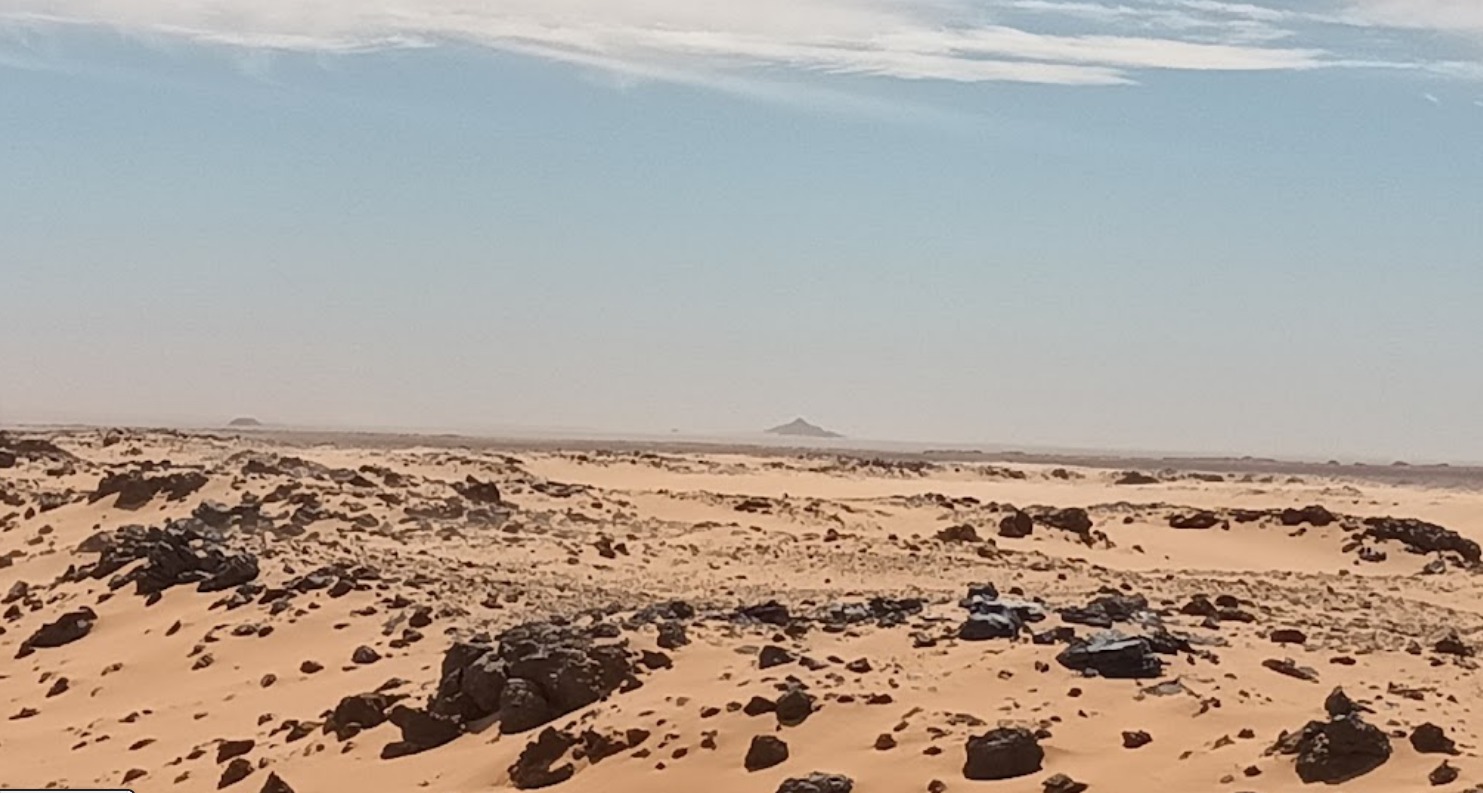
Libya-Egypt border. Sahara desert. Source: MA Husayn, Google Maps
And what's true for Libyan desert glass is true for Chilean desert glass:
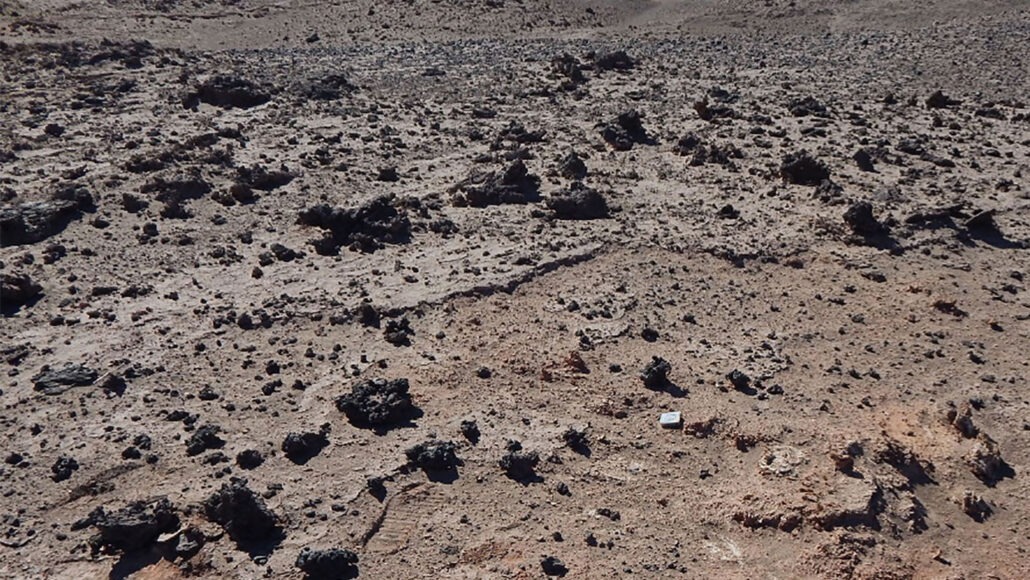
Fused glass near Chipana, Atacama Desert, Chile. Source: An ancient exploding comet may explain why glass litters part of Chile
The largest chunks in this image are about 0.4m (16 inches) across.
But that dirty, black surface hides how some chunks are better than 98% pure:
The crystalline mystery of Libyan desert glass. Source: Google Maps
Intriguing in any form, and puzzling in every form, Libyan desert glass can be so pure it's worth the thirst to collect it:
Libyan desert glass haul collected at Gilf Kebir. Source: Google Maps
The end of Libyan Desert Glass: The Saharan Treasure With Interstellar Origins gives you an idea of asking prices for small clean pieces like these.
That's the tourist and collectable jewellery version of desert glass. Not too much odd here - except the problem Taylor Swift and her colleague just raised: how did large fields of fused glass appear across this planet?
And of all places, especially in deserts.
From Terrestrial target and melting site of Libyan Desert Glass:
In spite of the large body of literature available on Libyan Desert Glass (LDG), several aspects regarding its origin are largely unknown and rather puzzling. Several hypotheses, through rather unlikely and bizarre terrestrial processes, have been proposed in the past.
Sparing the details, modern theories for Libyan desert glass favour a glassy comet impact in the Sahara or an air-burst explosion by a fast-moving meteorite or asteroid. Most agree the event was very, very hot - above 900 deg C - and very, very quick. And very, very energetic.
From Terrestrial target and melting site of Libyan Desert Glass:
Our data show that the Libyan Desert Glass terrestrial target was an incoherent, chemically and isotopically heterogeneous, sedimentary deposit, rapidly destroyed after impact and localized probably farther south than the recognized LDG strewn field.
That seems to be this theorist's way of saying the impact event - or airburst event - hit a layer of sandstone south of the main desert glass site in the White Desert. The theory goes on to suggest that either the impact moved the patch of molten debris northwards or something else moved that patch of glass slag northwards some time after impact.
If both versions sound unlikely, you have begun to appreciate how mysterious fused desert glass really is.
And that's just the start of it. For example, much less well-publicised artefacts are also found in Libyan desert glass patches:
Metallic clinker at Gilf Kebir. Source: Google Maps
This video is the only evidence I have found of melted metal clinker (or slag) within the Libyan desert glass field. However, the fact these guys took a metal detector along - plus the similar-looking deposits in the background - suggest they anticipated finding melted metal.
This has been an introduction to the desert glass enigma. What follows is a quick guide to the publicly available details for each well-known desert glass field. As you will see, very little is publicly known about some of these places.
Libyan Desert Glass:
Libyan desert glass is centred about 50km (30 miles) into Egypt's side of the Libya-Egypt border and 200km (120 miles) north of Eqypt's border with Sudan. But the field is larger than shown on the map, which only shows the known find sites.
Libyan Desert Glass field, Saharan Sand Desert east of the Libyan/Egyptian border.
Key:
- Green area: Fused glass locations
- Blue marker: Evidence of airburst/impact crater or possible comet core
- Red marker: Evidence of meteorite impact
The most quoted candidates for a Saharan impact blast is the Hypatia comet site in Egypt. But note Terrestrial target and melting site of Libyan Desert Glass speculated the event occurred south of the Egypt/Sudan border. And that the debris then moved northwards.
Curiously, a 5-10 tonne iron meteorite smashed into the sandstone bedrock on the border between Egypt and Sudan less than 5,000 years ago. Even more curiously, it impacted without apparently being noticed by the Egyptians. The Gebel Kamil meteorite left a crater more or less on the path Libyan desert glass took if it really did move northwards after impact. The Kamil Crater was only noticed in 2008 using Google Earth.
Kamil's curious disconnection from narratives about Egypt's civilisations - and with Libyan desert glass - continue to go unnoticed.
Atacama desert glass, Chile:
Much less has been written about the fused glass fields in Chile's Atacama desert:
Black arrows indicate more patches. Source: Widespread glasses generated by cometary fireballs during the late Pleistocene in the Atacama Desert, Chile
Like Libyan desert glass, patches of Atacama desert glass show up as collections of smaller patches, apparently as hummocks. As if distinct areas or objects were melted one-by-one or collectively.
For scale, the white arrows in this drone shot identify humans:
Yellow lines outline glass patches. Source: Widespread glasses generated by cometary fireballs during the late Pleistocene in the Atacama Desert, Chile:
Atacama glass field, Atacama desert, Chile.
Key:
- Green marker: Confirmed glass field locations
- Orange marker: Location unconfirmed. Starting with general area 5: near La Calera and Pica: TBD
As in the Sahara, the event that created these wasn't a hot summer desert noon sort of event.
From Widespread glasses generated by cometary fireballs during the late Pleistocene in the Atacama Desert, Chile, Peter Schultz et al, 2021:
Twisted and folded silicate glasses (up to 50 cm across) concentrated in certain areas across the Atacama Desert near Pica (northern Chile) indicate nearly simultaneous (seconds to minutes) intense airbursts close to Earth’s surface near the end of the Pleistocene. The evidence includes mineral decompositions that require ultrahigh temperatures, dynamic modes of emplacement for the glasses, and entrained meteoritic dust.
Folded 'Pica glass'.
It's sometimes called 'Pica glass' after a town in the northernmost field. Which makes it a little hard to believe that Pica glass was really only discovered shortly before 2012.
From Widespread glasses generated by cometary fireballs during the late Pleistocene in the Atacama Desert, Chile, Peter Schultz et al, 2021:
Vásquez N. Blanco et al (2012) discovered late Pleistocene glassy slabs in the Atacama Desert in northern Chile along a 75 km north-south corridor, near and southward from the town of Pica. The glasses occur in five general areas (each 1–3 km2) containing innumerable patches of folded and twisted masses, each covering 1 m2 to over 100 m2.
The five general areas are:
- Near the town of Pica
- South west of La Calera
- Puquio de Nuñez
- Quebrada de Chipana
- Quebrada Guatacondo:
- West of Quebrada Mani
- East of the Pampa del Tamarugal plateau
- An unspecified location
Schultz said. "I think we would have seen multiple small bodies, comets, coming in. Then they hit in different locations all about the same time, within minutes."
Schultz thinks the explosion took place within a mile of Earth, but never struck its surface, which is why it didn't form a crater. Instead, it probably ushered in enough extreme heat to melt the soil, he said, plus a tornado of heavy winds - likely above 100 miles per hour.
The PN (Puquio de Nuñez) glasses are typically concentrated on mounds and plateaus, which likely represent paleotopography, but they also occur in isolated clusters and over elongate strewn fields emerging from areas below active dunes between these mounds
At the QC (Quebrada de Chipana) locality, clusters of glass (typically 10–30 m across) are associated with mounds of clay emplaced on top of Pleistocene alluvium (Figs. S2 and S3). In certain areas, the glasses are mixed with clays emplaced on top of paleograsses developed on old terrace deposits associated with the Chipana ravine. The glasses at the Quebrada Guatacondo (QG) locality are more dispersed and mixed with silicified plant materials and clays. Scattered surface glasses also occur farther south, west of Quebrada Mani, and farther north near La Calera and Pica.
I think the phrase 'concentrated on mounds and plateaus, which likely represent paleotopography' is a phrase to think about very carefully.
As also is this phrase:
The glasses at the Quebrada Guatacondo (QG) locality are more dispersed and mixed with silicified plant materials and clays
Because I suspect these phrase are ways of saying the Atacama's melted glass is concentrated around the remains of structures.
Dalanzadgad, Gobi Desert
Very very little is publicly available in English about this field.
Gobi desert glass is found within walking distance of Three Camel Lodge, Dalanzadgad, southern Mongolia:
So unknown it requires a value-add to sell any. Source: Gobi Desert Glass (Mongolia)
From Gobi Desert Glass (Mongolia):
while I was there, I hiked to where there are petroglyphs and old burial mounds, and I found a very few pieces of "desert glass". I figured the storms and floods tumble the glass, just like the oceans do.
Desert glass is also rumoured to be found 1,205 km (750 miles) away. Same Gobi desert but this is near Lop Nur in China:
Not good news for the Gobi's fused glass jewellery vendors. Source: Atomic Warfare | Prehistoric Nuclear Conflicts
Apparently there is little English language information available about Gobi desert glass. That AI-generated video has the most information I've been able to find about the glass field alleged near Lop Nur.
However, I don't think the Gobi's patches of fused glass were created in an ancient nuclear war. I suspect air-bursts re-shaped these sites and that all these events were more likely to have been plasma events. Similar to the Carrington Event. And perhaps as recent.
Edeowie glass field, Nullarbor Plain, Australia:
Edeowie glass is found on the eastern side of Australia's Nullarbor Plain:
Edeowie glass field, South Australia
Key:
- Green marker: Edeowie glass find sites
The main source of information on this desert glass field (at the time of writing) is Pleistocene glass in the Australian desert. The case for an impact origin. That paper is very interesting for its local knowledge and comments.
From Pleistocene glass in the Australian desert. The case for an impact origin, Geology, vol. 29, issue 10, 2001:
in an area of about 55 kilometres (34 miles) long by 10 kilometres (6.2 miles) along the western side of the Flinders Ranges near Parachilna and east of Lake Torrens.
enigmatic fused crustal material
Irregular masses and flat slabs of vesicular, slag-like, and glassy melt (referred to herein as Edeowie glass) are locally abundant on a desert plain in central South Australia, where the material appears to be associated with an old land surface
shock metamorphism in quartz suggest that the thermal source may have been in some way associated with an impact event, although an obvious crater is lacking.
it is necessary to contemplate other poorly understood impact-related thermal phenomena.
It certainly is. There are many craterless impact sites and meteorite-less crater sites on Earth. They repay investigation.
And the enigmas of desert glass continue,
Darwin Glass Field, Tasmania:
Not much has been published about the glass field around Darwin, Tasmania. That might be because Darwin's fused glass sparkles with enigmas.
The field is associated with Darwin Crater 10 km (7 miles) to the east:
Source: Darwin Crater - Wikipedia
At 1.2 km (0.7 miles) wide, Darwin Crater is described as an impact crater.
From Darwin glass - Wikipedia:
Fragments of Darwin glass are found scattered over a 410 km2 (160 miles2) area... buried under peat and soil.
The glass occurs north, west and south from the Darwin Crater (Google Maps). Its distribution extends to Kelly Basin (Google Maps) and the lower northeast shore of Macquarie Harbour (Google Maps). Northwards it extends almost to the Lyell Highway (Google Maps) and Crotty Dam (Google Maps).
Curiously, Darwin glass is rare in Darwin Crater itself.
From Distribution and Abundance of Darwin Impact Glass, KT Howard, PW Haines, 2003:
My observations indicate that the crater structure is almost completely lacking in glass
Doubly amazing about Howard's finding is that surveys across Darwin's glass field suggest the field contians huge amounts of glass.
About 25,500 tonnes of it.
From Distribution and Abundance of Darwin Impact Glass, KT Howard, PW Haines, 2003:
This indicates that relative to the size of the suspected source crater this is the most abundant ejected impact glass on Earth! In fact the volume of ejected melt at Darwin Crater is more abundant than is observed at much larger complex craters. Zamanshin Crater (13 km diameter) is more than 10 times larger than Darwin but here it is estimated that there is less than 100 tonnes of ejected glass - orders of magnitude less than is observed in the Darwin strewn field
At similarly sized simple craters such as Meteor or in small crater fields like Henbury far less glass has been found and all of this has come from closer to the crater than at Darwin. This is despite these craters being on easily searched, flat desert planes in contrast to the mountainous rainforest of the Darwin glass strewn field.
So, you'd think at least some of the glass would be in Darwin Crater.
In fact, it's easier to find Darwin Glass in the Western Sahara than in its own crater.
Darwin glass is, however, very closely associated with is gravel. And oddly, it is found in gravel on valley sides and in flat valley bottoms. Even more strangely, Darwin glass shows no sign of having been moved down valley slopes by streams, rivers or meltwaters.
From Distribution and Abundance of Darwin Impact Glass, KT Howard, PW Haines, 2003:
Glasses recovered from these gravels show fine surface sculpting and delicate primary morphologies that further suggest both the glass and therefore the gravels have not undergone significant lateral movement or spent time entrained in fluvial transport.
In other words, Darwin Glass doesn't look weathered. In this respect, Darwin Glass is a mystery curiously similar to the delicate fused glass found at the Wabar Crater complex in Saudi Arabia's Empty Quarter.
From A Visit to a Distant Impact Site:
A mystery is that since the impact is suspected to have happened at least as far back as the 19th century, how could such delicate glass pieces survive 150 years of sandstorms.
One way to resolve this mystery is to suppose the glass was created more or less where it is found and more or less 'very recently'.
Some Darwin glass resembles the shape and range of Libyan desert glass:
Darwin Glass crater samples, Tasmania. Source: Darwin Crater - Wikipedia
But with extra mystery.
The teardrop shaped samples in the bottom row - second and third from left - suggest the glass was flung about while hot. They look like tektites. Given that Tasmania is inside the vast Australasian tektite field, this resemblance seems innocuous enough:
Tektite strewn fields allegedly indicate meteorite-strike debris. Source: Tektites
But Darwin Glass isn't like its neighbouring Australasian tektite.
From Distribution and Abundance of Darwin Impact Glass, KT Howard, PW Haines, 2003:
[Darwin Glass's distribution] range is typical of the distribution of tektites from large impact events but the bulk of Darwin glass has a morphological and chemical character more commonly associated with proximal impact glasses.
I'll show later that the origin and perhaps even the bizarre distribution of Darwin Glass is probably reasonably well understood. It's just not public knowledge.
More:
Libyan Desert Glass
- Walking on Glass: The Mystery of Libyan Desert Glass
- Libyan Desert Glass: The Saharan Treasure With Interstellar Origins
- Libyan Desert Glass: geochemical composition and origin
Atacama Desert Glass
- An ancient fireball turned miles of the world’s driest desert into glass
- Astro Bob: Comet explosion may have forged Atacama's mysterious Pica glass
- An ancient exploding comet may explain why glass litters part of Chile
- Mysterious glass in the Atacama Desert may be from an ancient exploding comet
- Vast patches of glassy rock in Chilean desert likely created by ancient exploding comet
- Massive comet exploding over Chile 12,000 years ago may have created strange glassy rocks
- Vast patches of glassy rock in Chilean desert likely created by ancient exploding comet
- New findings show ancient comet likely responsible for glass-covered desert
- Atacama Desert’s mysterious field of glass shards can now be explained, study claims
- Mysterious patches of glass scattered across the Chilean desert are likely the products of an ancient exploding comet
- The Atacama Desert Is Covered In Silicate Glass—And Experts Think a Comet Is to Blame
- Origin of Mysterious Black Glassy Rocks in Atacama Desert Found Through Clues Not From Earth
- Mysterious Shards of Glass Are Strewn Across Miles of Desert, And We Finally Know Why
- Comet’s intense heat turned sand to glass 12,000 years ago
- How Was the Atacama Desert Melted to Glass 12,000 Years Ago?
- Atacama desert glass - Wikipedia
Edeowie Glass field
- Edeowie Glass Revisited
- Australian 'bush glass' bears the fingerprints of a cosmic...
- Mysterious Fragments of Glass in Australian Outback Have ...
Darwin Glass field
© All rights reserved. The original author retains ownership and rights.
-
A layman's summary of Iron projectile fractionation processes in siliceous glass from small impact craters ↩
More of this investigation:
Desert Forensics,
More of this investigation:
The Reformation Was a Reformatting
More by tag:
#geology
